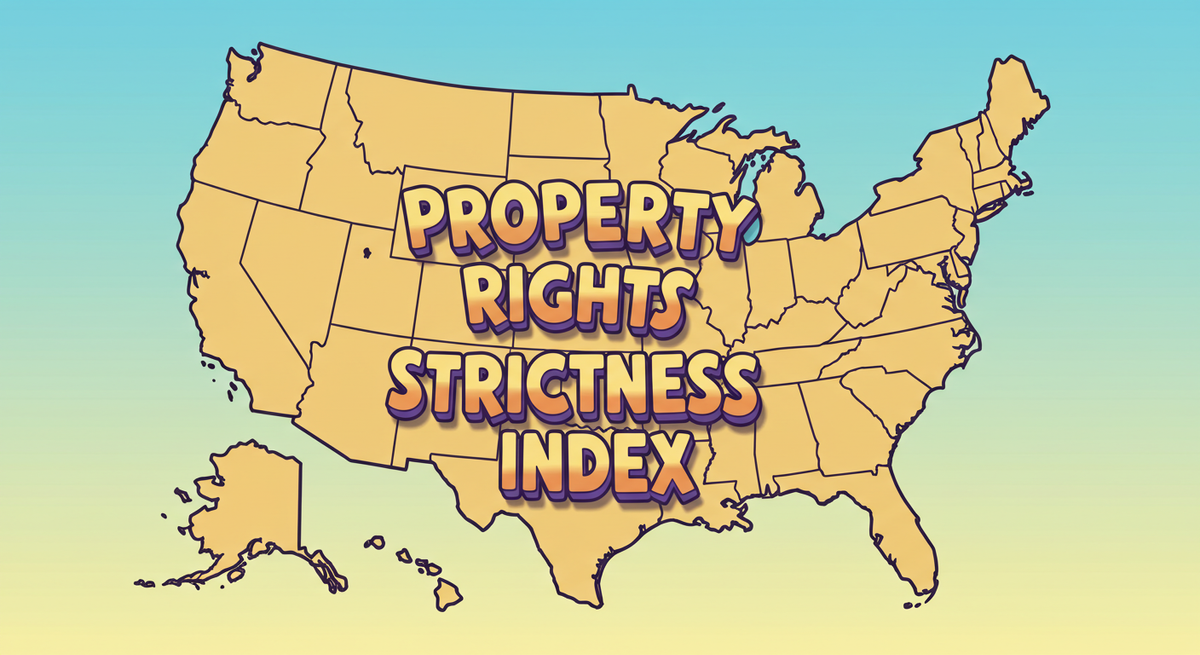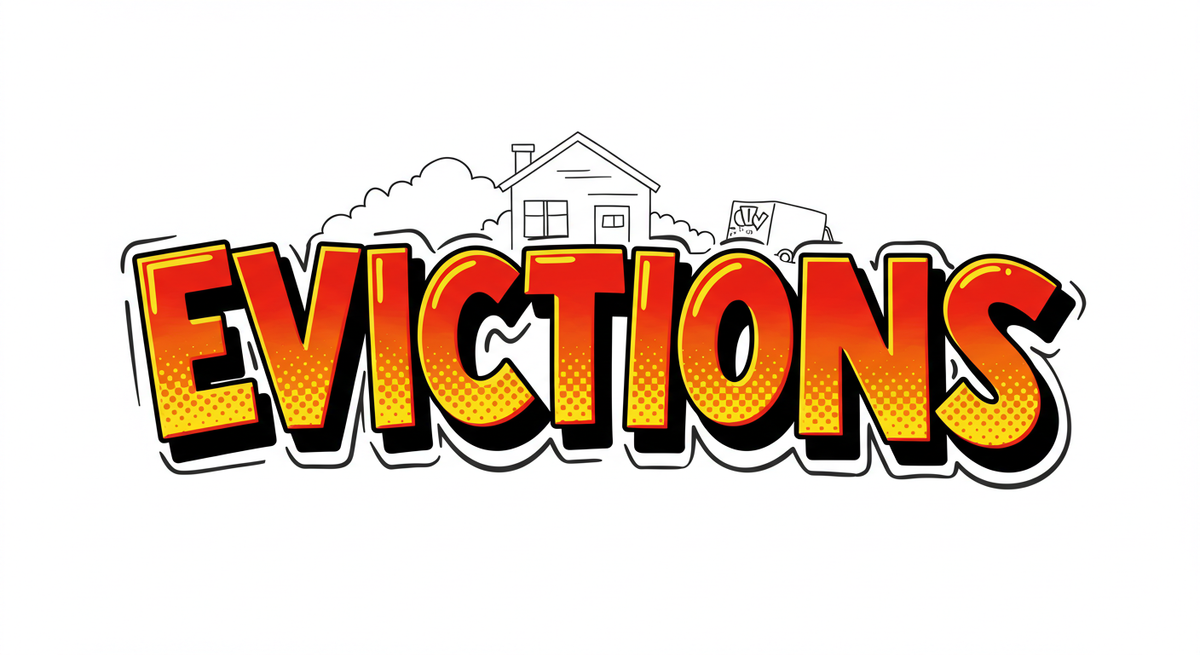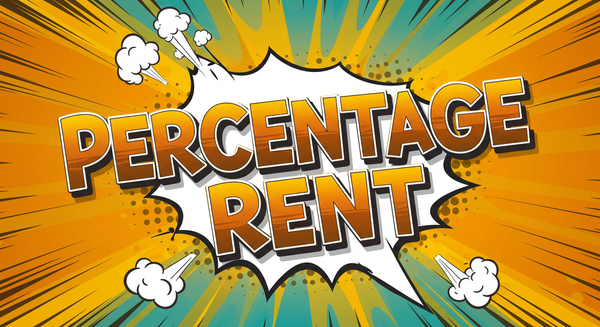Property Rights Strictness Index: Squatters Rights Laws by State
The color-coded visualization offers an at-a-glance understanding of how your state ranks in protecting your ownership rights against potential adverse possession claims.

Did you know that in California, someone could legally take ownership of your vacant property after living there for just 5 years? Meanwhile, property owners in New Jersey enjoy six times that protection with a 30-year threshold. This shocking disparity reveals how your property rights can vary dramatically depending on which state your investment sits in.
While many people think of squatters' rights as applying only to vacant properties, that's not always the case. Even something as simple as a neighbor’s fence extending beyond the property line can lead to a loss of land if it goes unchallenged for the amount of time required by your state.
Our comprehensive Property Rights Strictness Index analyzes adverse possession laws across all 50 states, revealing a surprising continental divide in ownership protection. This research exposes the often-overlooked legal pathways that allow non-owners to potentially claim title to your property through what's commonly known as "squatters rights."
The color-coded visualization below offers an at-a-glance understanding of how your state ranks in protecting your ownership rights against potential adverse possession claims.
See the interactive charts below to examine the strictness of squatters rights laws in each of the 50 US states.

U.S. Property Rights Strictness Index
Comprehensive Analysis of All 50 States (Updated 2025)
Key Analysis Insights
- Florida's Major Shift: Recent 2024-2025 legislation has dramatically strengthened property rights, moving Florida from the least strict (1.8) to among the most strict (4.9) categories
- Regional Patterns: The Northeast continues to maintain strong property protections, with New Jersey and Delaware leading at 5.0
- Category Distribution: 62% of states (31) now fall in the moderate to very strict categories (3.0-4.7)
- Western Variation: Western states show significant variation, from California's minimal protections (1.0) to Hawaii's strong protections (4.5)
- Legislative Trends: Recent years have seen increasing focus on property rights legislation, with Florida representing the most dramatic policy shift
- Adverse Possession Impact: States with stricter ratings typically have more restrictive adverse possession requirements and stronger owner notification systems

The OCEAN requirements (Open, Continuous, Exclusive, Adverse, and Notorious occupation) form the foundation of adverse possession claims nationwide, but the statutory timeframes and additional requirements create wildly different levels of owner protection.
For property investors, vacation homeowners, and especially owners of vacant land, understanding these state-by-state differences isn't just academic—it's simply Risk Management 101.
Whether you're expanding your portfolio across state lines or simply protecting your current holdings, this analysis provides critical insights into where your property rights stand strongest—and where they may be more vulnerable than you realize.

Methodology: Property Rights Strictness Index
This comparative analysis of adverse possession laws rates all 50 U.S. states on a scale of 1-5, with higher ratings indicating stronger barriers to adverse possession claims and better protection for property owners. The rating methodology evaluates four critical dimensions:
Key Dimensions Analyzed
- Statutory Timeframe Requirements
- Longer periods (20+ years) receive higher strictness ratings
- Moderate periods (11-19 years) receive moderate ratings
- Brief periods (≤10 years) receive lower ratings
- States with multiple timeframe options (based on conditions) are evaluated on both standard and shortened pathways
- Color of Title Requirements
- States requiring documented color of title for any adverse possession claim receive higher ratings
- States offering significant timeframe reductions with color of title receive modified ratings
- States with no documentation requirements receive lower ratings on this dimension
- Tax Payment Prerequisites
- Mandatory property tax payments throughout the statutory period increase strictness ratings
- Partial tax payment requirements (e.g., for only some years) slightly increase ratings
- No tax payment requirements decrease ratings
- Special Conditions
- Unique requirements like notification obligations, improvement mandates, or residency requirements are weighted
Rating Categories
- Category 5 (4.8-5.0): Extremely strict requirements, virtually impenetrable barriers (20-30 year timeframes, multiple additional hurdles)
- Category 4 (4.0-4.7): Very strict requirements (generally 15-20+ year timeframes with meaningful additional requirements)
- Category 3 (3.0-3.9): Moderately strict requirements (generally 10-15 year timeframes with some additional requirements)
- Category 2 (2.0-2.9): Less strict requirements (generally 7-10 year timeframes with limited additional requirements)
- Category 1 (1.0-1.9): Least strict requirements (generally 3-7 year timeframes with minimal additional requirements)
Data Sources
The analysis draws from multiple legal and government resources including state statutes, legal databases, property law publications, and adverse possession case law reviews. Primary sources include state-specific adverse possession statutes, legal encyclopedias, and scholarly analyses of property rights frameworks across jurisdictions.








